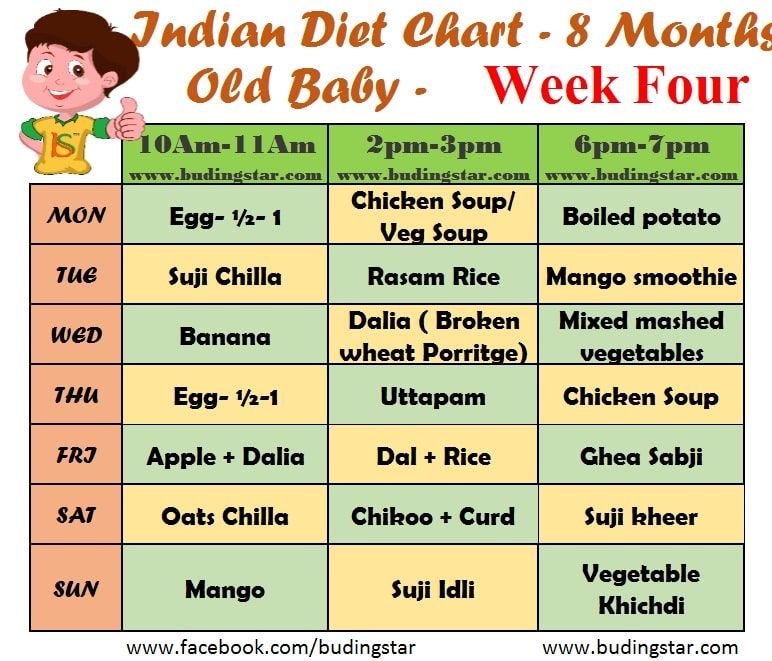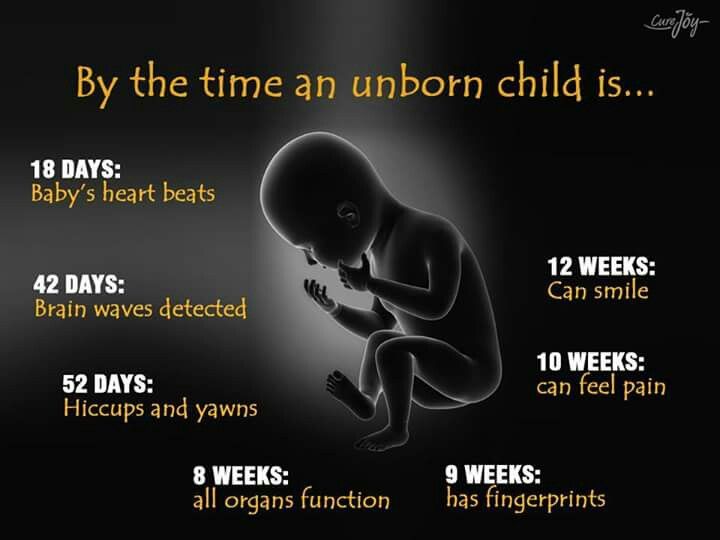How often to feed a three month old baby
3 Month Old Baby: Development and Milestones
3-Month-Old Baby
What a charmer! At 3-months-old, baby is probably smiling plenty, and they’ve likely started to imitate what they hear and see (so watch what you do, mama!). You should chat with baby throughout the day, describing what you're doing, how you're doing it and where you're going—this is how they’ll eventually learn to talk! Just don't go too crazy though. Baby is a quick learner, but they need you to keep things clear and simple, and to recognize when they need a break.
As your 3-month-old baby continues to grow and develop, there are lots of things you’ll want to keep an eye on and a few key 3-month-old baby milestones to watch for. With a whole three months under your parenting belt, you may feel more confident in your child-rearing skills, but you likely have a lot of questions: How often do you feed a 3-month-old baby? How can you play with a 3-month-old? And let’s not forget: When will my 3-month-old sleep through the night? Ready for the lowdown? Here’s everything you need to know about your budding little person.
In this article.
3-month-old development
3-month-old health
3-month-old feeding
3-month-old sleep
3-month-old schedule
Activities for a 3-month-old
3-month-old baby checklist and tips
3-Month-Old Development
Baby is becoming even more active and social at the three-month mark, right? They’re more in control of their body and more aware of people and interacting with them, which makes for lots of fun at playtime.
3-month-old baby weight and length
Parents want to know: How much should a 3-month-old weigh and measure? The average weight of a 3-month-old baby is 12.9 pounds for girls and 14.1 pounds for boys; average length is 23.5 inches for girls and 24.2 inches for boys.
Whether baby’s close to the average or not, the important thing is that they’re growing at a healthy rate. They’ve likely gained another 1.5 to 2 pounds and grown 1 to 1.5 inches this month. The size of baby’s head may have gone up by a half inch too.
It’s common for a baby to experience a 3-month-old growth spurt. Signs of a growth spurt are having an especially hungry or cranky baby. Baby might wake more at night too. Don’t worry—growth spurts are temporary! Let baby eat, sleep or cuddle more if that’s what they seem to want, and try not to get too frustrated by the sudden change. It can be exhausting for you, but growth spurts usually only last one to three days at a time.
3-month-old’s five senses
At 3-months-old, baby’s senses have developed rapidly.
- They’re working at becoming a great communicator, making eye contact with you, and they can now recognize your face.
- They follow moving objects with their eyes.
- They smile when they hear your voice.
3-month-old baby milestones
Read for all the cuteness to ensue? There are impressive developmental milestones approaching. So what should a 3-month-old be doing? Here’s a peek:
- They’re mimicking some sounds, movements and expressions and starting to babble.

- Let baby play on the floor or under a baby gym, since they love to kick up a storm and swing at things and bat at any dangling toys they see.
- A 3-month-old at tummy time probably raises their head and chest, holding up their upper body with their arms.
- They open and close their hands.
- When you hold baby upright, they’ll push down with their feet onto the floor or your lap.
- They bat at hanging toys above.
- They can grasp and shake a toy.
- You might be wondering, can a baby sit at 3 months of age? Every baby is unique, but many begin sitting up with support anywhere between the three- and five-month marks. The bigger and stronger baby gets, the easier it will be for them to sit up solo.
- Another big question: Can a 3-month-old baby see the TV? At this age, babies are beginning to see more vivid colors and can recognize faces at a distance. Regardless, most experts advise against introducing television or digital screens at such a young age.

You’ll also want to look out for these signs of a developmental or medical problem at the three-month stage; they’re worth a call to the doctor:
- Baby doesn’t respond to loud sounds or smile at the sound of your voice.
- Baby doesn’t follow moving objects with their eyes.
- Baby doesn’t smile socially.
- Baby can’t grasp or hold objects.
- Baby doesn’t bring their hands or objects to their mouth.
- Baby’s eyes still seem crossed most of the time.
- Baby doesn’t babble.
- Baby doesn’t pay attention to new faces.
- Baby doesn’t push down with their feet when they’re held upright and they’re placed on a flat surface.
3-Month-Old Health
There are lots of health questions parents of 3-month-olds have. Below are some of the most common, with links to detailed articles to help you answer them:
3-Month-Old Feeding
In the last couple months, baby’s appetite has certainly increased! And they know how to tell you when they’re hungry.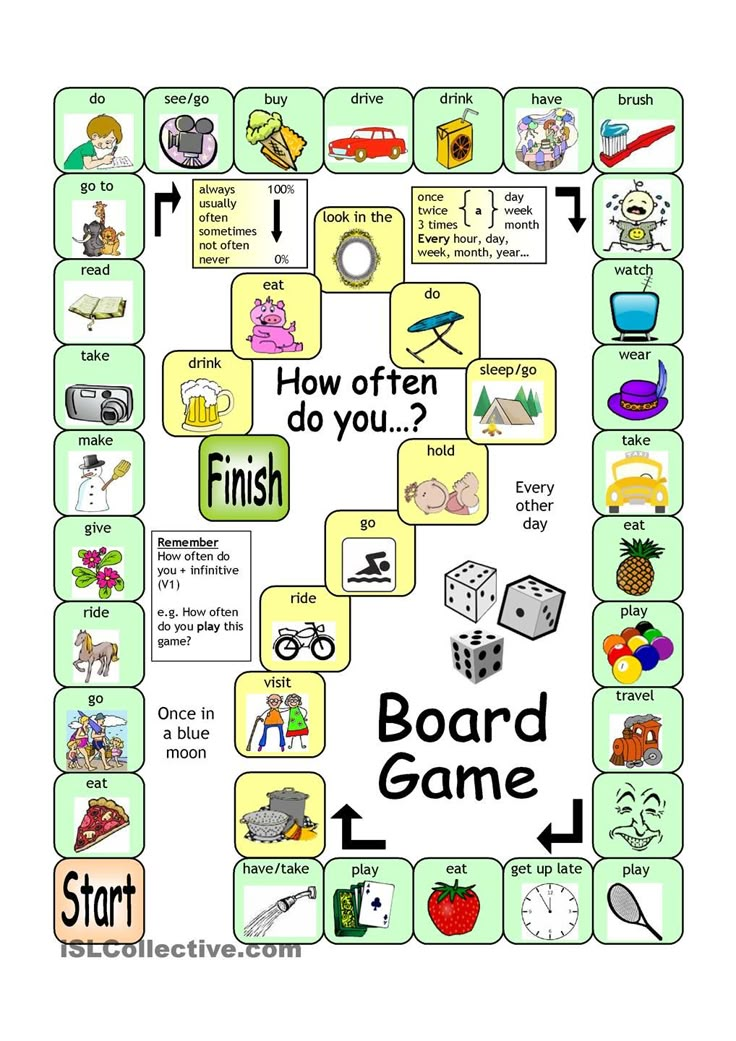 Of course, you’ve probably gotten in such a routine with feeding that you know when they’re about to do that hungry cry.
Of course, you’ve probably gotten in such a routine with feeding that you know when they’re about to do that hungry cry.
How much should a 3-month-old eat?
- Bottle feeding: How much formula for a 3-month-old baby? Typically five ounces about six to eight times a day will suffice.
- Breastfeeding: How often should a 3-month-old nurse? Feedings are typically about every three or four hours at this age but each breastfed baby may be slightly different. What’s important is that baby seems content, your boobs seem to have been emptied (they’re soft) and baby’s gaining weight healthily.
To double-check that baby’s getting enough breast milk, you can also track their diapers. How many wet diapers for a 3-month-old baby? About four or five very wet ones per day indicate that your little one is getting ample milk.
Three-month-old babies may start eating less than they did previously. Breastfed babies do get more efficient, so it’s normal for your baby to feed in about half the time it took them to feed as a newborn. If you see all the signs that baby’s getting enough to eat, it’s perfectly normal. If not, it could be a sign of a problem, so talk to the pediatrician.
If you see all the signs that baby’s getting enough to eat, it’s perfectly normal. If not, it could be a sign of a problem, so talk to the pediatrician.
What can baby eat this month?
Baby is still only able to eat breast milk and/or formula. Many parents ask: “Can I give my 3-month-old water?” Nope! Most doctors recommend parents wait until baby’s ready for solid foods before they get water. Don’t worry, baby’s getting plenty of hydration from breast milk or formula and needs the nourishment it provides.
How often do you feed a 3-month-old baby?
Three-month-olds will likely still need to be fed every three to four hours during the day. When in doubt, look for hunger cues. Before crying for their food, baby may lick their lips, stick out their tongue, repeatedly open their mouth, suck on things or touch their hands to their mouths. These can all be signals that it’s feeding time.
3-month-old feeding schedule
Image: Megan Rubey
3-Month-Old Sleep
Three months in and you’re ready to get this whole sleep thing settled. Want answers to the most common sleep questions among parents of 3-month-olds? Curious minds want to know:
Want answers to the most common sleep questions among parents of 3-month-olds? Curious minds want to know:
How long do 3-month-olds sleep and nap?
Three-month-olds typically sleep about 15 hours a day, and more of those hours are falling at night. In fact, it’s common for 3-month-olds to sleep about 10 hours at night, maybe with at least one five- or six-hour stretch. Baby is probably taking three naps totaling five hours of daytime sleep.
How can I get my 3-month-old to sleep?
It’s harder than you might think to get a tired baby to actually go to sleep! You’ve probably heard the usual advice: Keep the room dark and cool, rock and sing to your baby, and put baby to sleep while they’re sleepy but not yet asleep. Still, there are some nights when none of that seems to work. Try some other parents’ tried-and-true tricks for calming a fussy baby; they just might help you get your little one to snooze—finally.
What should my 3-month-old’s bedtime be?
The ideal bedtime for a 3-month-old baby depends on your family’s schedule, but many experts believe 7:30 p. m.—give or take—is ideal at this age. As baby begins to sleep for longer stretches at night, you’ll want to gradually make bedtime earlier, which (surprisingly!) encourages baby to sleep even longer.
m.—give or take—is ideal at this age. As baby begins to sleep for longer stretches at night, you’ll want to gradually make bedtime earlier, which (surprisingly!) encourages baby to sleep even longer.
Does my 3-month-old baby have sleep regression?
You may notice a bit of 3-month-old sleep regression. Baby might be waking more often at night because of a growth spurt, or it might be a developmental thing. Around 3 or 4 months, babies’ brains are becoming more alert and because of that, they want to be using that brainpower more often. Growth spurts can last a few days but true sleep regression (which typically happens closer to 4 months) can last two to six weeks.
3-month-old sleep schedule
Here’s a peek at a typical 3-month-old sleep schedule:
Image: Megan Rubey
3-Month-Old Schedule
Three-month-old babies are creatures of habit—bedtime, nap and feeding routines keep them happy.
3-month-old schedule example
A 3-month-old’s daily schedule might look something like this:
Image: Megan Rubey
Activities for a 3-Month-Old
Be sure to squeeze in some playtime with your 3-month-old baby each day. So how can you engage and play with a 3-month old? There are tons of ways to entertain your cutie pie at this stage.
So how can you engage and play with a 3-month old? There are tons of ways to entertain your cutie pie at this stage.
- Give baby a mirror and let them admire their reflection.
- Sing, read and talk to your 3-month-old baby; encourage them to make sounds of their own. This sweet back-and-forth is the basis of an early conversation!
- Place a soft and colorful toy on baby’s chest and let them look, touch and play with it. A play gym or mobile can also provide plenty of amusement.
- Continue to put baby on a mat for tummy time. The more baby gets used to being on their tummy, the more they’ll be inclined to start working toward a scoot or crawl.
3-Month-Old Baby Checklist and Tips
- Make sure you have your four-month baby checkup scheduled.
- Look for signs of readiness for eating solid foods. The pediatrician may recommend you start as early as the four-month mark.
- If you’re going back to work after maternity leave, best wishes! You’ve got this!
- How often should I bathe my 3-month-old baby? Don’t worry about giving baby a bath more than once every few days.

- Find some new things to do with your 3-month-old baby.
- Take baby’s 3-month-old baby milestone photo.
A heads up that in the coming weeks, you’ll be entering new and exciting territory. Baby will work on those important 3-month-old baby milestones, and you’ll have even more to look forward to as they approach month four. Baby will master the art of holding their head up and maybe even begin rolling over from their tummy to their back.
Medical content was reviewed by Dina DiMaggio, MD, a board-certified pediatrician at Pediatric Associates of NYC and NYU Langone Health in New York City, and a spokesperson for the American Academy of Pediatrics. She is also the coauthor of The Pediatrician’s Guide to Feeding Babies and Toddlers.
How Often Should My 3 Month Old Eat?
3 months already!!
Your baby is 3 months old!! You will be starting to notice your little one is able to tolerate longer stretches of awake time throughout the day, starting to smile, vocalizing, following objects with eyes, and lifting head when placed on tummy! So many developmental changes and also changes in size!! In another three months (by 6 months of age), your little one will have doubled their birth weight!
With all these changes, these first few months may have been a bit of a blur! No matter how old your baby is, when it comes to feeding, I always tell parents “don’t watch the clock, watch your baby”.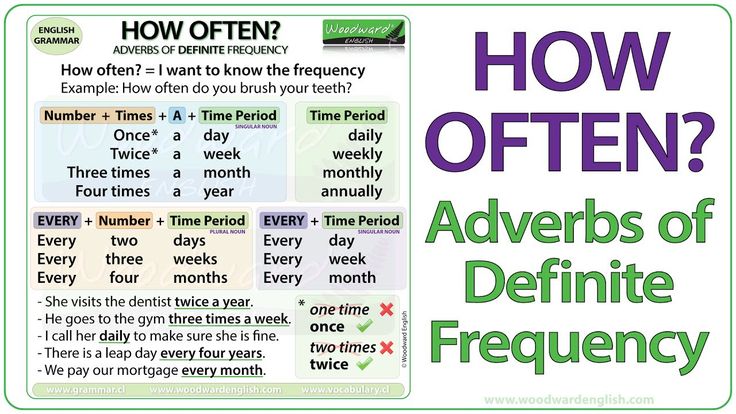 Look for those early feeding cues like hands to mouth, opening mouth, rooting…and feed your baby on demand. Crying is a late sign of hunger and an upset baby is much more challenging to feed.
Look for those early feeding cues like hands to mouth, opening mouth, rooting…and feed your baby on demand. Crying is a late sign of hunger and an upset baby is much more challenging to feed.
Breastfeeding
Newborn babies that are breastfed will feed more frequently as they are setting up your milk supply. Their stomach size starts off very small, about the size of a marble, so a much smaller capacity (¼-½ oz.)! Breastmilk is easier to digest so breastfed babies will feel hungry sooner. By the time your little one is 3 months old their stomach has grown to about the size of an egg (2½-5 oz capacity). Since their stomach capacity is larger, they can take in a greater volume of milk. You may be noticing your 3-month-old needs to nurse less often and you are able to develop a more reliable schedule! Keep in mind, as your little one grows there will always be growth spurts where feeding frequency will pick up for a short time and then normalize again.
On average, a 3-month-old breastfed baby will feed every 3-4 hours, about 7-9 times per day.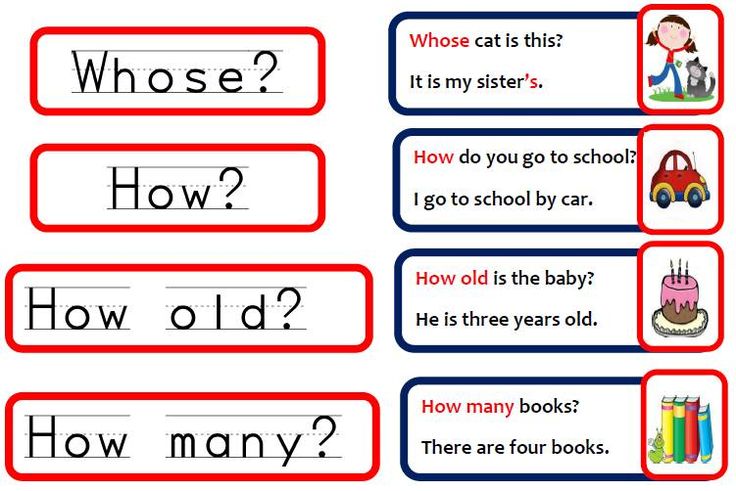 You will notice your baby feeds more efficiently and is probably done in half the time it used to take for a feed. Same rules mentioned above still apply to a feed, don’t watch the clock and worry about how long the baby has been on the breast, watch the baby for signs of an effective feed. An effective feed includes big sucks and swallows at the breast. When that changes to more of a flutter suck then that’s the sign they have transitioned into using the breast more for comfort than nutrition. This is a great time to try a breast compression (cupping your breast with your hand like a “C” pressing back, hold, squeeze forward and repeat). This will give the baby a surge of milk and encourage them to actively suck again. When that sucks slows again, take them off, burp, and repeat on the other side. Once done at other side, your breasts should feel soft and empty, baby should be content, and this is the perfect time to find your little one some sleep!!
You will notice your baby feeds more efficiently and is probably done in half the time it used to take for a feed. Same rules mentioned above still apply to a feed, don’t watch the clock and worry about how long the baby has been on the breast, watch the baby for signs of an effective feed. An effective feed includes big sucks and swallows at the breast. When that changes to more of a flutter suck then that’s the sign they have transitioned into using the breast more for comfort than nutrition. This is a great time to try a breast compression (cupping your breast with your hand like a “C” pressing back, hold, squeeze forward and repeat). This will give the baby a surge of milk and encourage them to actively suck again. When that sucks slows again, take them off, burp, and repeat on the other side. Once done at other side, your breasts should feel soft and empty, baby should be content, and this is the perfect time to find your little one some sleep!!
Bottle Feeding
Of course, for breastfed babies we have no idea how much they are getting volume wise, we just watch for that effective feed. If you are bottle feeding, the amount will vary but a 3-month-old baby typically takes 4-6 ounces 5-7 times per day. Formula takes a little longer to digest, so you might be able to get a slightly longer stretch between feeds with a bottle feed baby.
If you are bottle feeding, the amount will vary but a 3-month-old baby typically takes 4-6 ounces 5-7 times per day. Formula takes a little longer to digest, so you might be able to get a slightly longer stretch between feeds with a bottle feed baby.
Bottom Line
The best sign that your little one is getting an adequate amount of milk, no matter whether they are breast or bottle feeding, is always be sure you have appropriate amounts of wet and dirty diapers. A 3-month-old baby should have at least 4-5 very wet diapers per day. Babies this age should poop once a day but may skip a day here and there. Formula-fed babies typically go a little longer between bowel movements. Another wellness indicator, is your little one should be steadily gaining weight at follow ups appointment with his or her health care provider.
Your doing a great job with your little one(s)! If you have any questions or need some help, please reach out to any of The Mama Coaches, we would be happy to help!!
Daily routine of a child at 3 months: daily routine
03/28/2019
65
By three months, you will already notice how the baby has grown up, adapted to the new world, and his daily routine has become more understandable and predictable.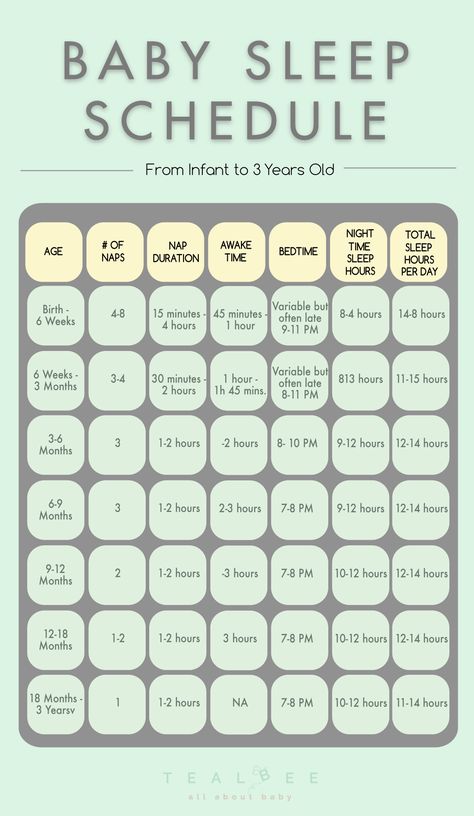 Now comes an important period in the life of a child, when it is necessary to pay special attention to the organization of the regimen, habits and conditions of sleep, so that in the future sleep does not become a problem.
Now comes an important period in the life of a child, when it is necessary to pay special attention to the organization of the regimen, habits and conditions of sleep, so that in the future sleep does not become a problem.
Let's see what to remember when organizing a three-month-old baby's daily routine.
Baby's daily routine
3 months old
At the age of three months, a baby needs about 15 hours of sleep per day. Most likely the child will sleep during the day 3-5 times for a total of about 4-5 hours. The duration of one daytime sleep will be about 1-1.5 hours.
Night sleep reaches 10 hours with awakenings for feeding. This month, the stretches of uninterrupted night sleep are already quite long. And the mode of sleep and wakefulness by the end of the month becomes more stable and predictable.
When organizing a child's routine, it is also worth paying attention to the optimal wakefulness time. By three months, the baby can comfortably spend active time for about 1 hour 15 minutes - 1 hour 30 minutes. Prolonged wakefulness will lead to severe overwork - it will be difficult for the child to fall asleep, and sleep itself will be restless. To prevent this, it is important to watch for signs of fatigue and start putting the baby to bed as soon as they appear.
By three months, the baby can comfortably spend active time for about 1 hour 15 minutes - 1 hour 30 minutes. Prolonged wakefulness will lead to severe overwork - it will be difficult for the child to fall asleep, and sleep itself will be restless. To prevent this, it is important to watch for signs of fatigue and start putting the baby to bed as soon as they appear.
The day mode is not yet possible to make by the clock. But by 4 months, it is better to gradually shift the time of leaving into the night closer to 20 hours. It is important that the baby wakes up no later than 7-8 hours in the morning. Following these recommendations will thus gradually form the physiological regimen of the child's day in accordance with the biological rhythms of the child's body.
It is better to form a child's day regimen based on the time of wakefulness, taking into account the recommended sleep norms for this age.
Sleep habits of the newborn
3 months
At three months, parents may experience that the baby:
- Started to sleep short naps and as a result there is no stable sleep schedule
- Responds to any stimuli
- Wakes up very often at night
- Doesn't get off hands when laying down
- Needs a breast or pacifier every time she wakes up
- Sleeps only when moving in a wheelchair
- Refuses to sleep in crib or wakes up when changing sleeping place
So now is the time to start good sleep habits read the tips below and join the A-to-Z MODE Club:
-
Enter the ritual before daytime and nighttime sleep, if you have not already done so.
 A ritual is a day-to-day routine that helps children relax and get ready for sleep: washing/bathing, massaging, putting on diapers and pajamas/swaddling, feeding, reading a story/singing a lullaby, curtaining the windows, and turning on white noise. For a ritual of three months, 10 minutes during the day and 20-30 minutes in the evening are enough.
A ritual is a day-to-day routine that helps children relax and get ready for sleep: washing/bathing, massaging, putting on diapers and pajamas/swaddling, feeding, reading a story/singing a lullaby, curtaining the windows, and turning on white noise. For a ritual of three months, 10 minutes during the day and 20-30 minutes in the evening are enough. -
Create a comfortable sleeping environment: darken the room with thick curtains, use white noise to muffle extraneous sounds and help your child sleep longer. Make sure the room is no more than 25 degrees in summer and no more than 23 degrees in winter.
-
Try to sleep at home in your crib. In the stroller in the fresh air, the last day's sleep is possible.
-
Let your baby try to sleep on his own. If you are feeding, rocking, or holding your baby, try not to do this until you are completely asleep. Then put the half-asleep baby in the crib - he should fall asleep on his own.
 But do not insist if he cannot fall asleep right away. This way of laying down will help the baby learn to independently cross the last line to sleep, which will become an important basis for future sound sleep.
But do not insist if he cannot fall asleep right away. This way of laying down will help the baby learn to independently cross the last line to sleep, which will become an important basis for future sound sleep.
Check our chart to see if your baby is getting enough sleep
Sample feeding schedule for a 3 month old baby
Babies at 3 months will need about 2-4 feedings per night, depending on whether your baby is breastfed or formula fed.
The baby is older and can take more breast milk or formula at one feeding. This means that he stays full longer and the intervals between feedings will be longer, and the duration of one feeding will become a little shorter.
The feeding schedule for this month is still under construction on demand. Your baby will likely eat every 2-3 hours during the day and every 3-4 hours at night.
If a three-month-old baby wakes up very often at night and you think that the introduction of complementary foods will change the situation, then this is not true.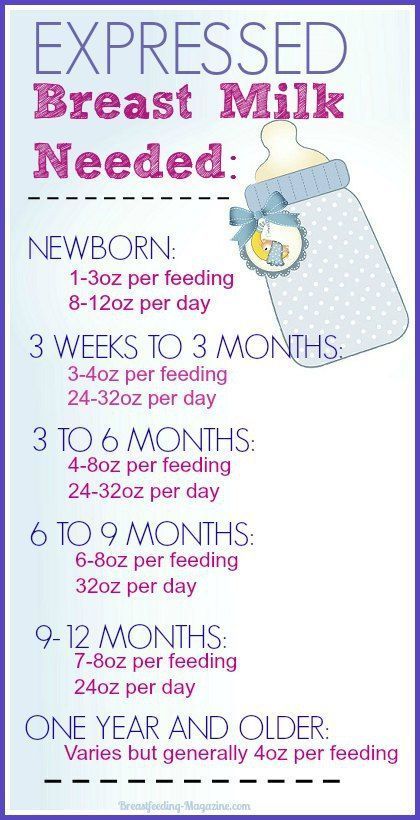 At this age, children are not yet ready to switch to adult food - now mother's milk and formula are the most healthy food for a newborn.
At this age, children are not yet ready to switch to adult food - now mother's milk and formula are the most healthy food for a newborn.
Infant development at 3 months
A three-month-old baby can already do a lot:
- smile and laugh
- keep head steady
- imitate certain movements and facial expressions after an adult
- take hands in mouth
- recognize the face of mom and dad
- push off with hands when laying on the tummy
- grab toys and shake them
The development of these skills takes place at its own pace, taking into account the individual characteristics of the individual child.
Walking on the street, tell your child everything that you see around him, because he is already very interested in it. Respond to his emotions with care to build trust.
Play with musical and luminous toys and rattles. Feel free to sing. All this will help the child develop hearing. Talk to him, respond to his requests to make it clear that you are near and hear him.
Talk to him, respond to his requests to make it clear that you are near and hear him.
Tell us about your baby's routine this month?
Like this article? Rate:
Votes: 493
Breastfeeding on demand
You can often hear from a nursing mother: "I feed on demand, my baby requires a breast every 3.5 hours." Or: “I have always fed on demand. In a year, we already had 1 feeding in the evening, and my child calmly refused to breastfeed. Before talking about the demand of the child, it is necessary to find out what modern women mean when they say - "I breastfeed."
Modern mothers consider breastfeeding essential for feeding their baby. Just for feeding. Breast milk is food, the mother supplies the baby with the nutrients necessary for growth and development. When a baby suckles at the breast, he eats. Breastfeeding makes sense only as a process of supplying proteins, fats, carbohydrates, vitamins and microelements.
During suckling, the baby receives the nutrients it needs with mother's milk. This is the absolute truth. There is another unconditional truth, which is not given any importance in modern society, it is not taken into account and is not considered. Breastfeeding for a child is communication with the mother. We need to figure out how the child understands feeding on demand? Can he understand anything at all? Is there any difference for him how he is fed, for 15-20 minutes after 3.5 hours or in some other way?
What is on-demand feeding
On-demand feeding of a newborn baby means putting it on the breast for every squeak or search. Squeak and search movements in newborns, even as early as the second or third day of life, begin to appear much more often than after 3.5 or 2.5 hours. The need for attachments increases rapidly, and by the 10-12th day of life, the need to attach to a child may occur 15-16 or more times a day. Applications vary in duration. The baby can fall asleep and sleep while sucking for, for example, 1. 5-2 hours. Can release the breast after 1-2 minutes. And then ask her again. Why does a child need such frequent contact with his mother's breast?
5-2 hours. Can release the breast after 1-2 minutes. And then ask her again. Why does a child need such frequent contact with his mother's breast?
That's why. Being in the mother's belly, in a calm, familiar environment, listening to the noises of the mother's body, being in a warm, cramped, confined space, the baby sucked his fist, fingers, loops of the umbilical cord, swallowed amniotic fluid. Learned to suck and swallow. After birth, experiencing discomfort for any, the most insignificant reason, the baby tries to get rid of it. You can get rid of discomfort by getting into the usual conditions of a comfortable stay. The only place where the baby after birth can feel the sensations familiar to him is in the arms of the mother. The only familiar action is sucking. The only familiar taste and smell is the taste and smell of milk and lube in the areola. Milk and lubricant have an odor and taste similar to the taste and smell of amniotic fluid. Therefore, experiencing discomfort, the baby squeaks, or begins to look for an object to suck with his mouth. Ideally, it is immediately applied to the chest. The baby becomes warm, cramped, he hears the beating of his mother's heart, breathing, grumbling in the intestines, he sucks and feels the familiar taste and smell. If such an action happens constantly, the baby gains confidence, no matter what happens, he will solve all his problems with his mother. The place of comfort is now under the breast, and you can suck on the breast.
Ideally, it is immediately applied to the chest. The baby becomes warm, cramped, he hears the beating of his mother's heart, breathing, grumbling in the intestines, he sucks and feels the familiar taste and smell. If such an action happens constantly, the baby gains confidence, no matter what happens, he will solve all his problems with his mother. The place of comfort is now under the breast, and you can suck on the breast.
This whole process is justified from a biological point of view. A newborn child does not feel the feeling of hunger, this feeling is not formed in him. It will begin to form at about two months of age. How to feed a creature that does not experience hunger ?! How to encourage him to take some action to get food? This can be done only at the expense of some other incentives. This stimulus for the newborn is constant bodily discomfort, thanks to which he wants to suckle all the time! The most intense, frequent and prolonged sucking in infants is observed in the first two or three months of life. It is in these first months that the main weight gain of the baby occurs.
It is in these first months that the main weight gain of the baby occurs.
Feeding in the first month
Baby falls asleep with the breast in his mouth, sleeps sucking for a while. Falling asleep deeply, lets go of the chest. After sleeping for a while, he wakes up, and is applied on waking. After sleep, he can stay awake for some time, for example, an hour and a half. During wakefulness, he may feel discomfort 2-3 times, for example, from a completely natural desire to pee, and having called his mother for help, having kissed for a couple of minutes, he will do his deeds. Then he will want to sleep, feel discomfort and, kissing his chest, will again fall asleep sucking. After some time, he will wake up and attach again. Then again a little "walk". And after some time, he will fall asleep at the chest again.
The daytime naps of a one-month-old baby feeding on demand vary in duration and number. There can be 4-6 dreams during the day, and they can last from 5-15 minutes to 2-2. 5 sometimes 3 hours. "Around" each dream, the baby is applied to the chest, and applied between dreams several times. At night, the child falls asleep at the breast. Usually in the early morning hours, he begins to fuss and apply. In the morning, he almost never fully wakes up. The baby sleeps, from time to time, sucking on his mother's breast. Waking up in the morning, the baby is again applied to the chest. If you count all the attachments that have happened in a baby of one month of age, then approximately 16-20 attachments are obtained. This is how a newborn human cub behaves if it is given the opportunity to behave in accordance with physiological and psychological needs, which, by the way, are genetically determined. The child of the first months of life does not separate his personality from the personality of the mother and from her breast. Mom and her breasts, and everything connected with them, are the universe of the baby and himself.
5 sometimes 3 hours. "Around" each dream, the baby is applied to the chest, and applied between dreams several times. At night, the child falls asleep at the breast. Usually in the early morning hours, he begins to fuss and apply. In the morning, he almost never fully wakes up. The baby sleeps, from time to time, sucking on his mother's breast. Waking up in the morning, the baby is again applied to the chest. If you count all the attachments that have happened in a baby of one month of age, then approximately 16-20 attachments are obtained. This is how a newborn human cub behaves if it is given the opportunity to behave in accordance with physiological and psychological needs, which, by the way, are genetically determined. The child of the first months of life does not separate his personality from the personality of the mother and from her breast. Mom and her breasts, and everything connected with them, are the universe of the baby and himself.
In most cases, a modern woman, being afraid to “accustom a child to hands”, strives to limit his requests for sucking. A pacifier and a bottle of tea or water come to her aid in this matter. They, too, can be sucked ... The need for sucking seems to be satisfied. But only the need for communication with the mother during suckling is not satisfied, the peculiar chain of mutual assistance and cooperation between mother and baby is destroyed, the formation of maternal affection and concentration is disrupted. Is the difference in the two actions noticeable to the reader: the baby cried, the mother took him, put him to her chest and started rocking him, or gave him a pacifier and started rocking the stroller, even with the words “Why are you crying, my sun?”
A pacifier and a bottle of tea or water come to her aid in this matter. They, too, can be sucked ... The need for sucking seems to be satisfied. But only the need for communication with the mother during suckling is not satisfied, the peculiar chain of mutual assistance and cooperation between mother and baby is destroyed, the formation of maternal affection and concentration is disrupted. Is the difference in the two actions noticeable to the reader: the baby cried, the mother took him, put him to her chest and started rocking him, or gave him a pacifier and started rocking the stroller, even with the words “Why are you crying, my sun?”
The modern woman who gives a pacifier and pumps a stroller is not a bad person who deliberately harms an infant. She is simply in captivity of prejudices regarding the relationship between mother and baby. She does not know how to behave correctly, does not know what to do in accordance with the natural needs of the child. If you tell her what the child really needs, she will exclaim in horror: “What is it, don’t let him get away with?!” Indeed, the child of the first months of life must not be let off the hook.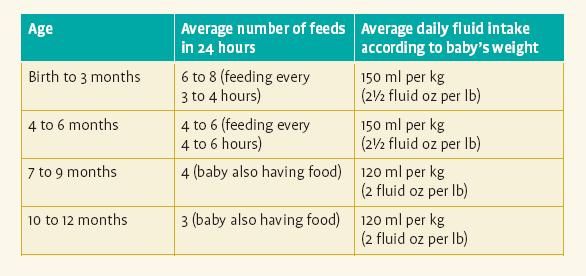 For a woman who does not know how to comfortably carry a baby, and who does not know how to feed him in various positions (sitting, lying, standing and even moving), this can be very difficult. Especially if she is not sure of the correctness of her actions.
For a woman who does not know how to comfortably carry a baby, and who does not know how to feed him in various positions (sitting, lying, standing and even moving), this can be very difficult. Especially if she is not sure of the correctness of her actions.
An action that should become automatic for the mother of a newborn: when the baby cries or shows other signs of anxiety, put the baby to the breast.
What's next?
The baby is growing. A fairly stable rhythm of daytime sleep begins to form in him, and a 3-4-month-old baby behaves quite differently from a newborn. Feeding on demand at this age looks something like this...
- At three months, the baby has 10-12 feeds during the day and 2-4 at night. There are frequent applications for a short time, but their number is reduced. There may be a long night break in feedings, about 5 hours, but this is very rare. Much more often the night break is 2.5-3.5 hours. By this age, the baby's body is noticeably rounded.
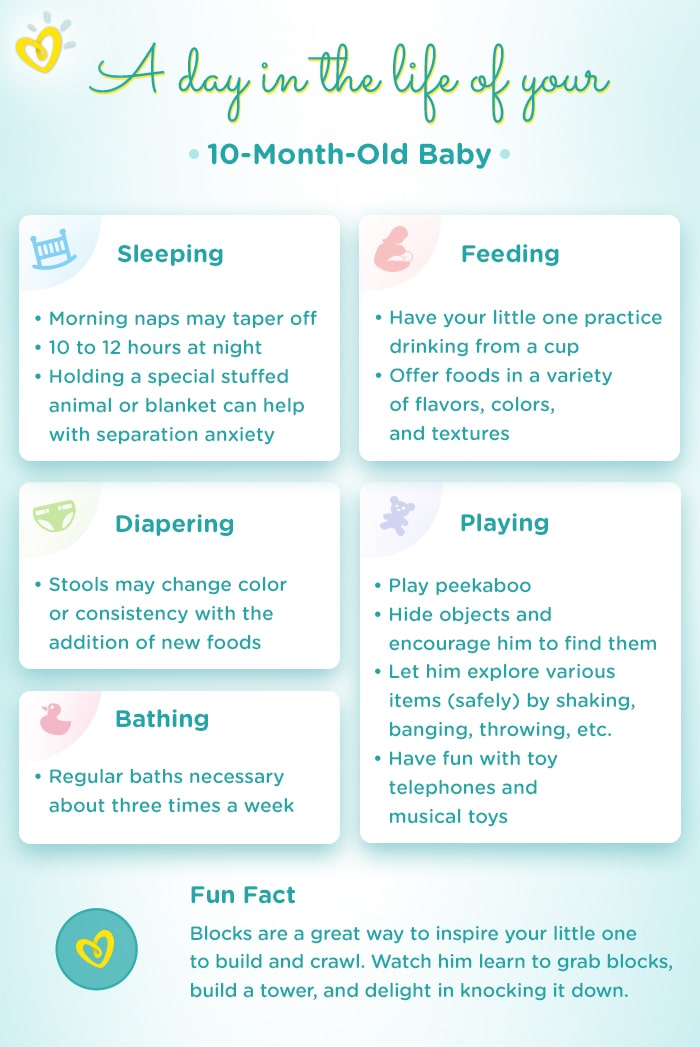
- At four months, the baby begins to breastfeed much less frequently. The main feedings are associated with sleep: the baby suckles before bedtime, during awakening and during sleep, both daytime and nighttime. In this regard, he has a fairly accurate feeding regimen. And many babies stop breastfeeding when they wake up after daytime sleep, sometimes as early as 2.5-3 months.
- At five months, the baby has 8-10 daytime feedings and 2-3 nighttime feedings, as well as in the fourth month of life, they are organized around dreams - the baby eats when he goes to bed and some babies suckle when they wake up.
- Feeding regimen changes at six months. The most active sucking shifts to the last 2-3 hours before waking up from a night's sleep. The period of daytime wakefulness can be divided into two periods: in the morning, when the baby sucked during the night is rarely applied to the breast, and in the evening, when attachments become very frequent. In total, there can be 7-10 day applications and 3-4 night applications.
 At this age, the baby begins a period of acquaintance with new food - pedagogical complementary foods. Sometimes there are attachments associated with the introduction of complementary foods, the baby “washes down” samples of new food with mother's milk. But many children do not want to drink complementary foods. When complementary foods are introduced to an on-demand baby, it is never meant to replace feedings with complementary foods. This is practically impossible, because the main feedings of the baby are associated with sleep, and mother's breakfasts, lunches and dinners, during which the baby gets acquainted with new food, are located between the baby's dreams, during his wakefulness.
At this age, the baby begins a period of acquaintance with new food - pedagogical complementary foods. Sometimes there are attachments associated with the introduction of complementary foods, the baby “washes down” samples of new food with mother's milk. But many children do not want to drink complementary foods. When complementary foods are introduced to an on-demand baby, it is never meant to replace feedings with complementary foods. This is practically impossible, because the main feedings of the baby are associated with sleep, and mother's breakfasts, lunches and dinners, during which the baby gets acquainted with new food, are located between the baby's dreams, during his wakefulness. - At seven months, the frequency of application is about the same.
- At eight months, the feeding regimen changes. Since the baby shows high motor activity and is very busy exploring the surrounding space, in the daytime he forgets to breastfeed. In this regard, the number of daily feedings can be reduced to 6-8 times.
 The baby compensates for the reduction in daytime feedings by increasing the frequency and duration of nighttime feedings up to 6 times.
The baby compensates for the reduction in daytime feedings by increasing the frequency and duration of nighttime feedings up to 6 times. - In the second half of the year, babies who stopped breastfeeding when waking up after daytime naps recall this habit again. The baby’s daytime sleep in the second half of life, as well as in the region of a year and older, looks something like this: the baby falls asleep sucking, sleeps quietly for a while, for example 1-1.5 hours, then starts tossing and turning, fiddling, worrying, at this moment the mother lies down next to , gives him a breast and the baby can fill up 10-15-30 minutes sucking. Mom may well use this time for her own rest - lie down, read, while the baby sleeps while sucking. I know my mother, a lover of embroidery, who used this time specifically for embroidery ...
- Breastfeeding becomes more frequent at nine to ten months. In the daytime, this is 4-6 full feedings and about the same number of attachments for various reasons.
 The baby has new reasons for attachment. If, during active actions to master the world, the baby fills a bump or gets scared, he calms down with his mother's breast. There may be situations when you can comfort the baby by sitting next to him and hugging him. At night, 4-6 feedings remain, the baby begins to suckle more actively in the morning between 3 and 8 hours.
The baby has new reasons for attachment. If, during active actions to master the world, the baby fills a bump or gets scared, he calms down with his mother's breast. There may be situations when you can comfort the baby by sitting next to him and hugging him. At night, 4-6 feedings remain, the baby begins to suckle more actively in the morning between 3 and 8 hours. - At eleven months, a baby can already have 2-3 complete complementary foods. Initiation to adult food in the mind of a child is not associated with breastfeeding: attachment to the mother's breast is something other than the desire to get enough of the product they like. As a rule, after the baby has eaten, he feels the need to attach himself to the breast. The number of daily feedings remains the same in the child, but the number of short-term attachments increases. There are active mid-morning feedings between 4 and 8 o'clock in the morning.
- At ten or twelve months, the baby, if he is already walking, can sometimes breastfeed every time he comes to his mother, i.
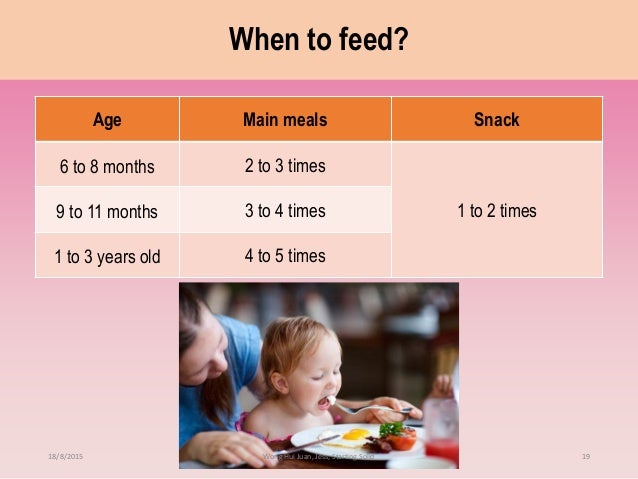 e. about every 15-30 minutes. Attachments around dreams and night sucking persist. Therefore, if a mother says that a child suckles once or twice a day, this means that there is no feeding at the request of the child. There are restrictions imposed by the mother, with which the baby has come to terms. He treats breast sucking like food, sucks on a pacifier or a finger to fall asleep or soothe, or falls asleep just like that, without calming down.
e. about every 15-30 minutes. Attachments around dreams and night sucking persist. Therefore, if a mother says that a child suckles once or twice a day, this means that there is no feeding at the request of the child. There are restrictions imposed by the mother, with which the baby has come to terms. He treats breast sucking like food, sucks on a pacifier or a finger to fall asleep or soothe, or falls asleep just like that, without calming down. - At twelve months, the baby is applied in about the same way.
- At the age of one and a half years, there may already be one daytime nap, so there are fewer attachments associated with sleep. Preserved for morning sucking. The baby is very free with his mother's breasts. Sometimes it happens that he comes up to suck just for pleasure. For example, like this: he comes up, climbs on his knees, looks into his mother’s face, smiles, starts to swarm in his shirt, gets breasts, smiles at his breasts, sucks for 30 seconds and leaves.

As for the number of feedings per day when feeding a child on demand, their number is almost never less than 12. A newborn has 12 or more attachments, basically they are all associated with dreams. And a child, say 1.5-2 years old, can also have about 12 attachments, only 3-4 are associated with sleep, and the rest are short-term attachments for various reasons. I suggest to all mothers reading this text - do not count the application, do not notice their duration. Breastfeed your baby as often as he asks, when you feel the need to.
Mothers who do not think about breastfeeding without looking at the clock may get the impression that when feeding on demand, the mother can do nothing but feed the baby. This is not true. After the birth of a baby, a mother begins another life, she is called life with a baby. That's all. The child is with the mother, not the mother with the child! Feel the difference! You need to be able to organize your life in a different way, in the first months, of course, the help of loved ones is very necessary. In the tradition of many peoples, it was customary for the first 40 days after childbirth to remove a woman from any housework and household chores, she was engaged only in a child. In some nations, objects that the mother of a newborn touched were considered “unclean”, therefore, they preferred to protect the mother from the rest of the household, allocating her a separate “corner” of the house, where no one bothered her and she did not interfere with anyone. Among the Slavs, such a restrictive custom was called a six-week. By 1.5-2 months, the rhythm of daytime dreams begins to form, and the baby has a kind of “regime”, the mother becomes more free.
In the tradition of many peoples, it was customary for the first 40 days after childbirth to remove a woman from any housework and household chores, she was engaged only in a child. In some nations, objects that the mother of a newborn touched were considered “unclean”, therefore, they preferred to protect the mother from the rest of the household, allocating her a separate “corner” of the house, where no one bothered her and she did not interfere with anyone. Among the Slavs, such a restrictive custom was called a six-week. By 1.5-2 months, the rhythm of daytime dreams begins to form, and the baby has a kind of “regime”, the mother becomes more free.
For a mother who can't imagine breastfeeding without looking at the clock, and who is sure that the “right” baby is the baby lying quietly in her crib all the time, feeding on demand will be a complete hassle. It will be much easier for such a mother if she stops looking at the clock and ties the baby to herself with a large scarf or uses a patchwork holder (sling). It will become easier for her if she stops running between the nursery and the kitchen, but takes the baby with her to the kitchen and carries him around the house with her, doing housework, in a box, a cradle, a special chair, if she tries not to put him off often, and pick up as soon as possible, postponing the baby only in case of emergency and not for long.
It will become easier for her if she stops running between the nursery and the kitchen, but takes the baby with her to the kitchen and carries him around the house with her, doing housework, in a box, a cradle, a special chair, if she tries not to put him off often, and pick up as soon as possible, postponing the baby only in case of emergency and not for long.
Breastfeeding is not the same as house arrest. In the conditions of modern society, it is possible to organize the exit of a nursing mother to work from about 6 months of age of the baby. If necessary, you can start working from the age of 4 months, but, of course, it is better not every day of the week and not full time. It is the responsibility of a breastfeeding consultant to help a mother organize her return to work.
Sometimes, when counseling mothers on breastfeeding, I suggest that they forget for a second that they are already living in the 21st century. I propose to return, for example, to the cave and ask what they will do if the child woke up at night, how to calm him down? If you are walking through the forest and trying not to attract the attention of predators, how to make the baby silent? If the child is thirsty, what will you give him? What is the baby used to, for thousands of years of its existence? To the fact that he sleeps on his mother while she wanders through the forest with a digging stick in search of roots, and wakes up when mother stops.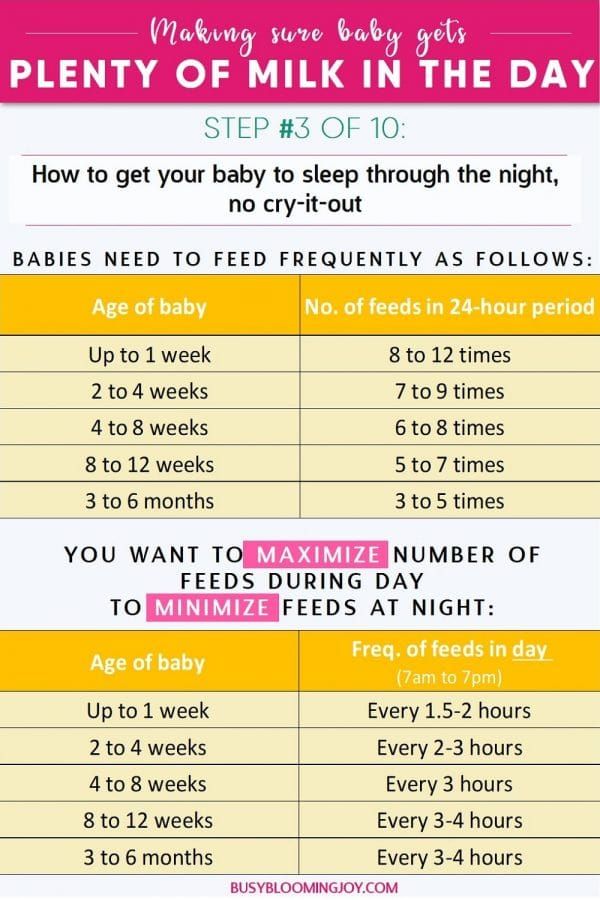 Since mom stopped, then there is time to wake up and suck. Therefore, even now the child sleeps well, tied to the mother with a patchwork holder, wakes up when the mother, having done a few household chores, sits in a chair to take care of the baby.
Since mom stopped, then there is time to wake up and suck. Therefore, even now the child sleeps well, tied to the mother with a patchwork holder, wakes up when the mother, having done a few household chores, sits in a chair to take care of the baby.
Some mother, reading about the cave, will be offended, saying that she is a civilized creature. But please think. Man, mother's breast and mother's milk have been created by evolution over millions of years. They are made for each other. Baby food has created progress and more recently. The skills of motherhood and breastfeeding have also been lost by our society quite recently. A person is not physiologically adapted to artificial feeding and a pacifier. The mother's breast will not produce enough milk at 6-7 feedings per day. Nature did not know, when creating man as a mammal, that the time would come when the need for breastfeeding would be satisfied by some kind of pacifiers and nipples.
Changes that occur during the formation of the personality of a child who did not have full contact with the mother during prolonged breastfeeding are noted by modern research by psychologists and sociologists.